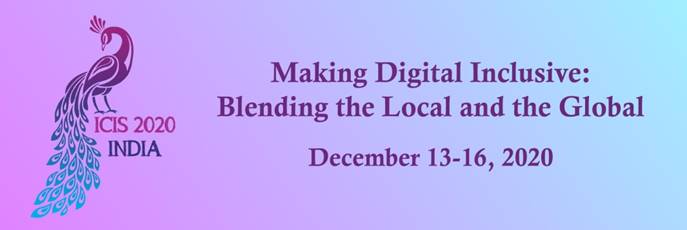User Behaviors, User Engagement, and Consequences
Loading...
Paper Type
Completed
Paper Number
1178
Description
Conversational agents (CAs) represent a paradigm shift in regards to how humans use information systems. Although CAs have recently attracted considerable research interest, there is still limited shared knowledge about the distinctive characteristics of CAs from a user experience-based perspective. To address this gap, we conducted a systematic literature review to identify CA characteristics from existing research. Building on classifications from service experience theory, we develop a taxonomy that classifies CA characteristics into three major categories (i.e. functional, mechanic, humanic clues). Subsequently, we evaluate the usefulness of the taxonomy by interviewing six domain experts. Based on this categorization and the reviewed literature, we derive three propositions that link these categories to specific user experience dimensions. Our results support researchers and practitioners by providing deeper insights into service design with CAs and support them in systematizing and synthesizing research on the effects of specific CA characteristics from a user experience-based perspective.
Recommended Citation
Zierau, Naim; Wambsganss, Thiemo; Janson, Andreas; Schöbel, Sofia; and Leimeister, Jan Marco, "The Anatomy of User Experience with Conversational Agents: A Taxonomy and Propositions of Service Clues" (2020). ICIS 2020 Proceedings. 2.
https://aisel.aisnet.org/icis2020/user_behaviors/user_behaviors/2
The Anatomy of User Experience with Conversational Agents: A Taxonomy and Propositions of Service Clues
Conversational agents (CAs) represent a paradigm shift in regards to how humans use information systems. Although CAs have recently attracted considerable research interest, there is still limited shared knowledge about the distinctive characteristics of CAs from a user experience-based perspective. To address this gap, we conducted a systematic literature review to identify CA characteristics from existing research. Building on classifications from service experience theory, we develop a taxonomy that classifies CA characteristics into three major categories (i.e. functional, mechanic, humanic clues). Subsequently, we evaluate the usefulness of the taxonomy by interviewing six domain experts. Based on this categorization and the reviewed literature, we derive three propositions that link these categories to specific user experience dimensions. Our results support researchers and practitioners by providing deeper insights into service design with CAs and support them in systematizing and synthesizing research on the effects of specific CA characteristics from a user experience-based perspective.
When commenting on articles, please be friendly, welcoming, respectful and abide by the AIS eLibrary Discussion Thread Code of Conduct posted here.


